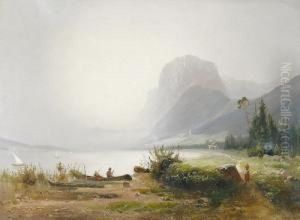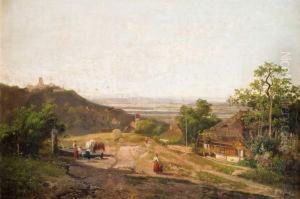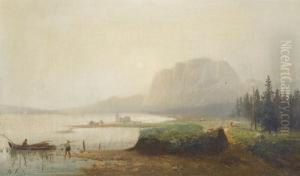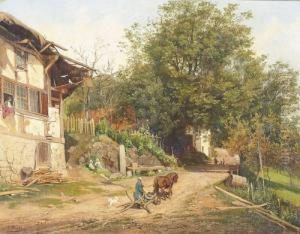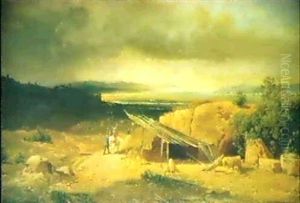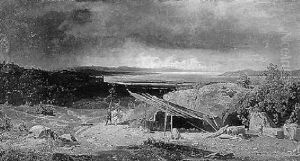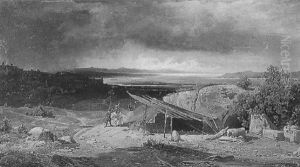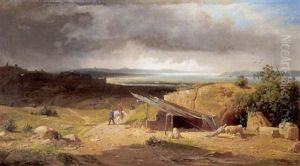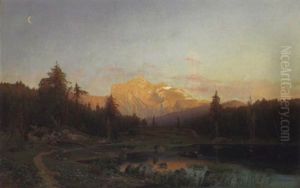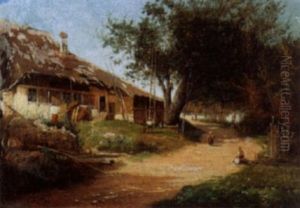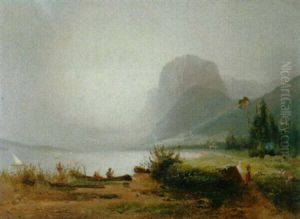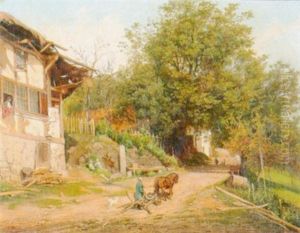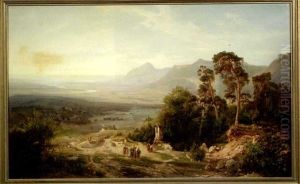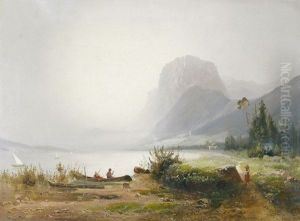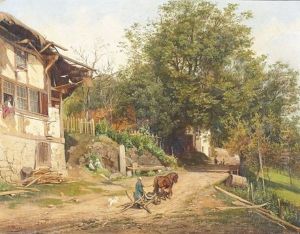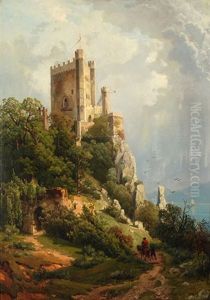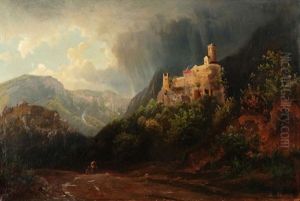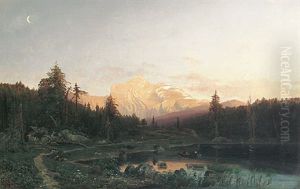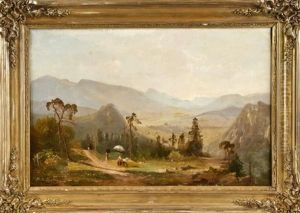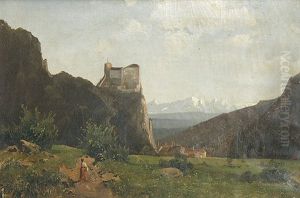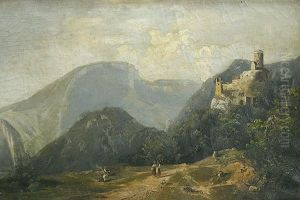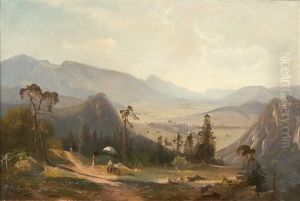Bernhard Studer Paintings
Bernhard Studer was a Swiss geologist, born on August 21, 1794, in Büren an der Aare, Switzerland. He was not primarily known as an artist in the traditional sense of painting or sculpture but made significant contributions to the scientific community through his geological studies. His work, however, often required a degree of precision and illustration that overlaps with the skills of an artist, as he had to accurately depict geological formations and maps.
Studer showed an early interest in natural sciences and began his education at the Academy of Bern. He then continued his studies at the University of Göttingen, where he was particularly influenced by the teachings of the German geologist Abraham Gottlob Werner. Werner was a proponent of Neptunism, which posited that rocks formed from the crystallization of minerals in the early Earth’s oceans. Studer's early works were influenced by these teachings, though he later shifted his views as the science of geology developed.
Throughout his career, Bernhard Studer was a pioneer in the geological study of the Swiss Alps and played a crucial role in the development of modern geology in Switzerland. He published his most significant work, 'Geologie der Schweiz,' in two volumes between 1851 and 1853. This monumental work laid the foundation for the geological mapping of Switzerland and was a significant achievement of the time, both scientifically and artistically, as it required detailed geological sketches and an understanding of the landscape’s aesthetics.
Studer was also a professor at the University of Bern, where he taught geology and influenced a generation of Swiss geologists. He was a member of various scientific societies and received recognition for his contributions to the field of geology. Although not an 'artist' in the traditional sense, his legacy lies in the precise and often beautiful geological maps and illustrations that accompanied his scientific work.
Bernhard Studer died on May 2, 1887, in Bern. His life bridged a period of fundamental change in the understanding of the Earth’s geological processes, and his work remains a testament to the close relationship between art and science, particularly in the era before photography became widespread in scientific documentation.
